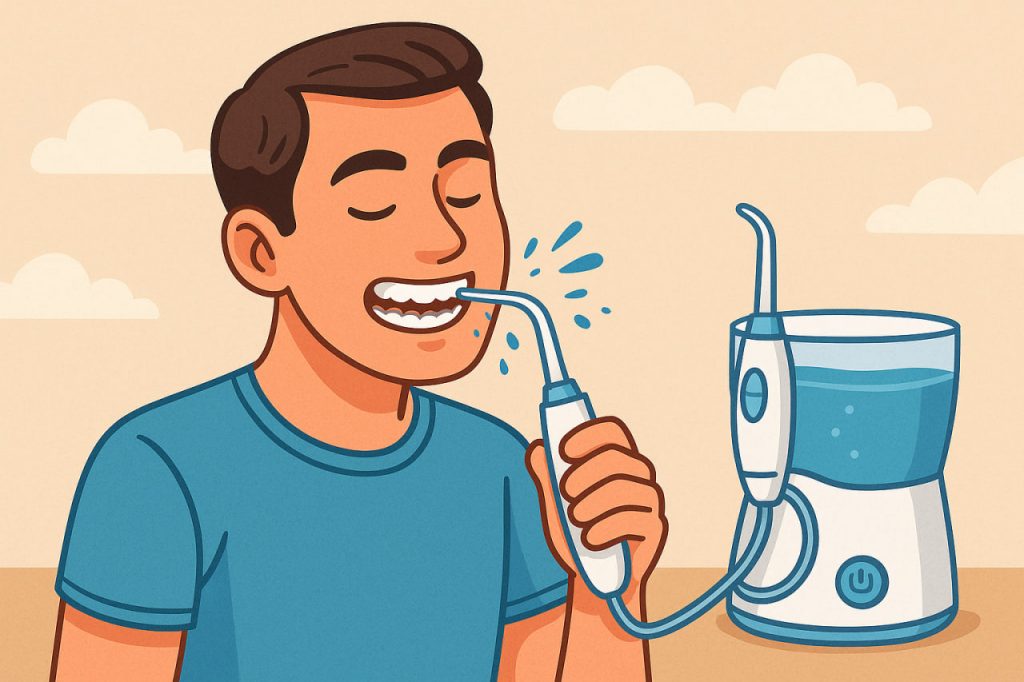An oral irrigator (also called a water flosser) is a modern dental device designed to clean the spaces between teeth and along the gum line using a jet of water under pressure. Unlike a traditional toothbrush or dental floss, the irrigator uses water pulses to remove food particles, dental plaque, and bacteria from hard-to-reach areas. Dentists recommend it as an additional tool for maintaining oral hygiene and preventing gum diseases.
How an Irrigator Works
- The device consists of a water tank, pump, nozzle, and control buttons.
- Water (sometimes mixed with a special mouth rinse) is drawn into the pump and ejected as a fine, pressurized jet.
- The jet penetrates between teeth, under dental crowns, braces, and into gum pockets, washing out debris and bacteria.
Benefits of Using an Irrigator
- Deep cleaning – Reaches places where a toothbrush and floss cannot.
- Gum health – Reduces inflammation and bleeding by massaging gums and removing bacteria.
- Safe for orthodontics – Excellent for people with braces, implants, or bridges.
- Prevention of bad breath – Helps reduce bacteria that cause unpleasant odor.
- Gentle care – Suitable for people with sensitive gums.
How to Use an Irrigator Properly
- Fill the tank – with warm water or a dentist-approved rinse.
- Choose the nozzle – standard tip for everyday cleaning, orthodontic tip for braces, periodontal tip for deep gum cleaning.
- Adjust pressure – beginners should start with low pressure, then gradually increase.
- Use correctly – place the tip near the gum line at a 90° or 45° angle.
- Move slowly – guide the jet along each tooth and between teeth, spending 2–3 seconds per space.
- Finish cleaning – the full procedure usually takes 2–3 minutes.
When to Use
- Once daily, preferably in the evening after brushing.
- After meals, if there is food stuck between teeth.
- Especially recommended for people with orthodontic systems, implants, or periodontal disease.
Precautions
- An irrigator does not replace brushing — it should be used in addition, not instead.
- People with severe gum disease should consult a dentist before using it.
- Children can use irrigators under adult supervision.
Conclusion
The irrigator is an effective addition to daily oral care. It improves gum health, enhances the results of brushing, and makes dental hygiene more comfortable, especially for people with braces or implants. Regular use helps prevent cavities, gingivitis, and bad breath, ensuring a healthier smile.
Glossary
- Irrigator – a dental device that uses water jets to clean between teeth.
- Plaque – a sticky film of bacteria on teeth.
- Periodontal pockets – gaps between teeth and gums where bacteria can accumulate.
- Orthodontics – dental treatment using braces and corrective devices.
- Gingivitis – inflammation of the gums.


